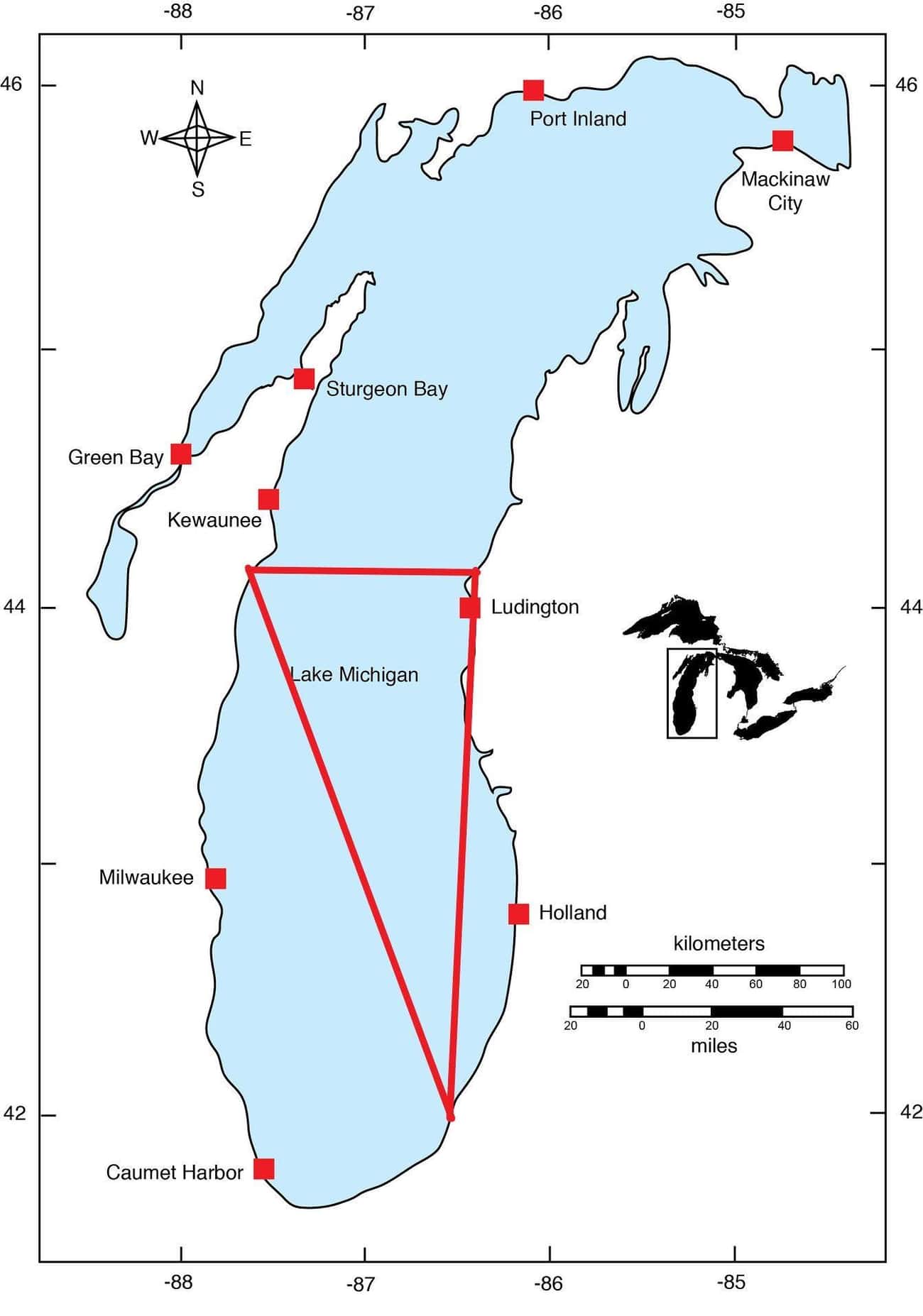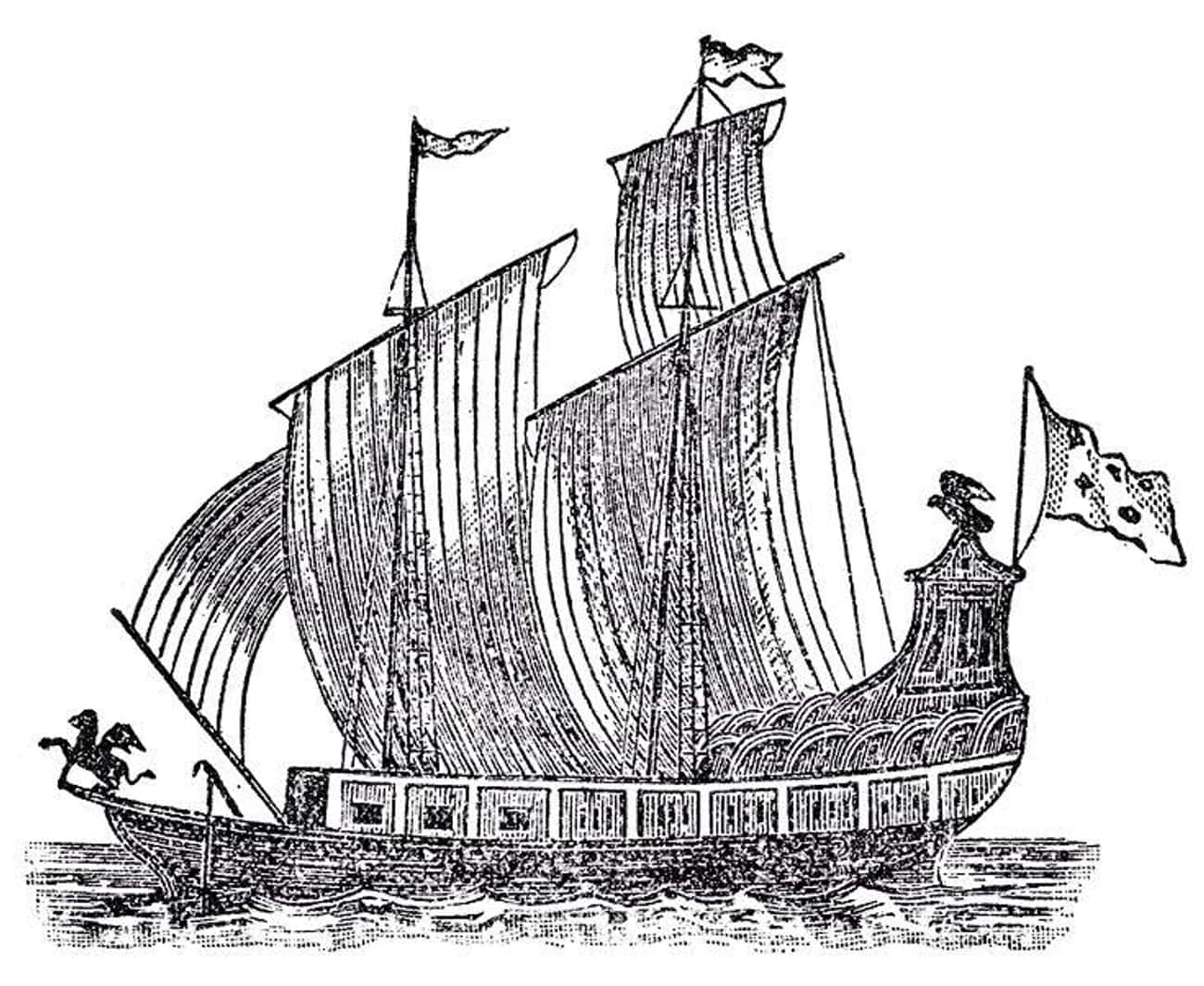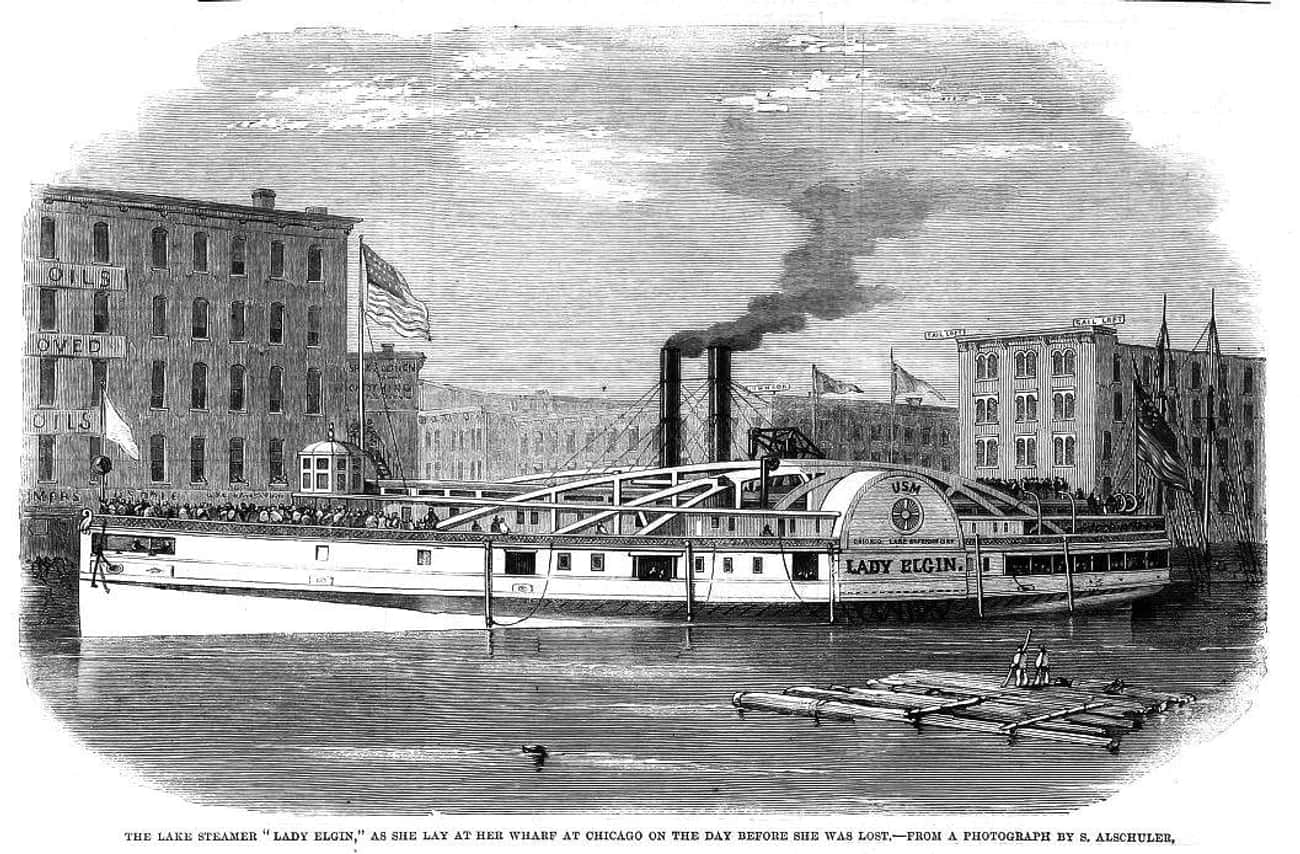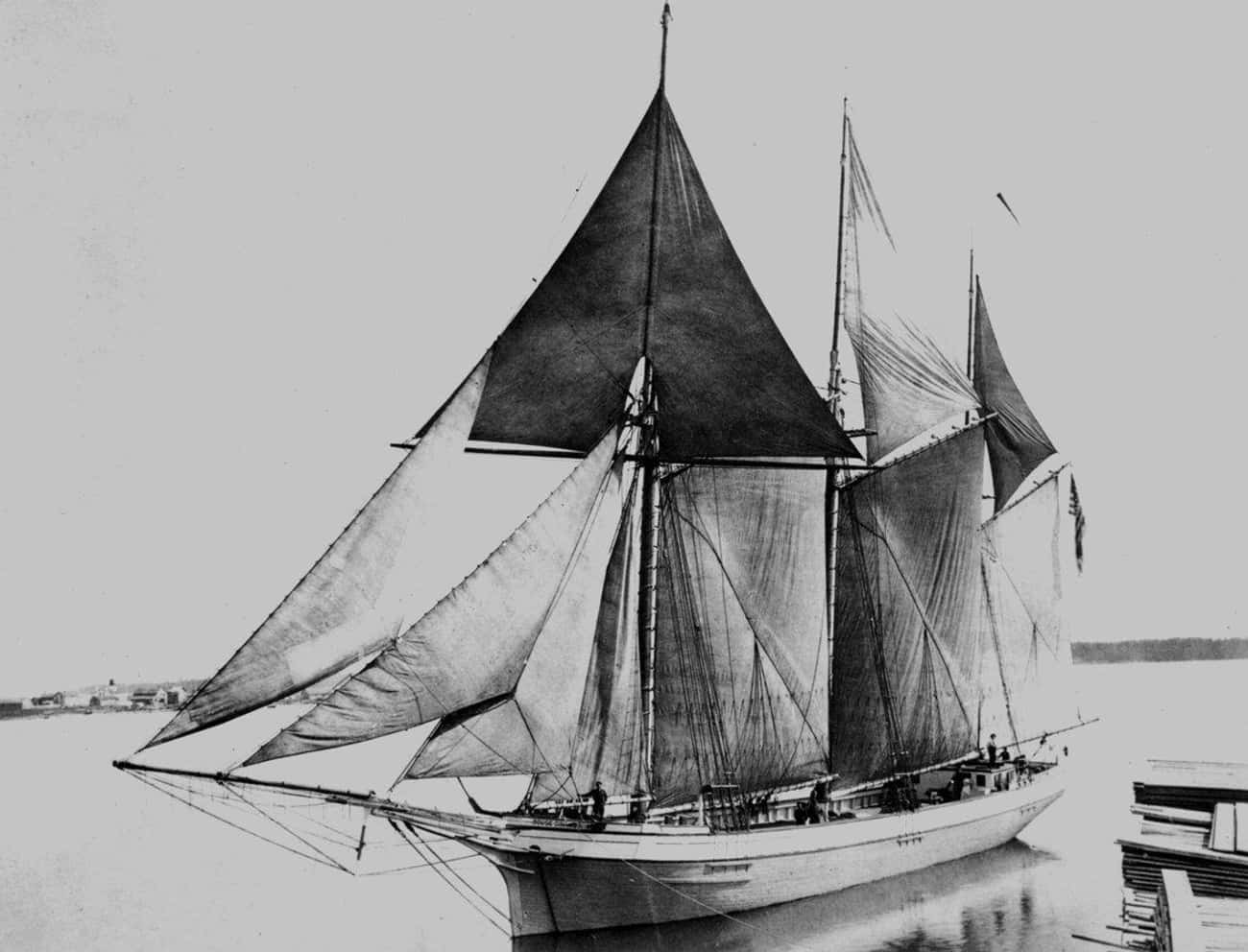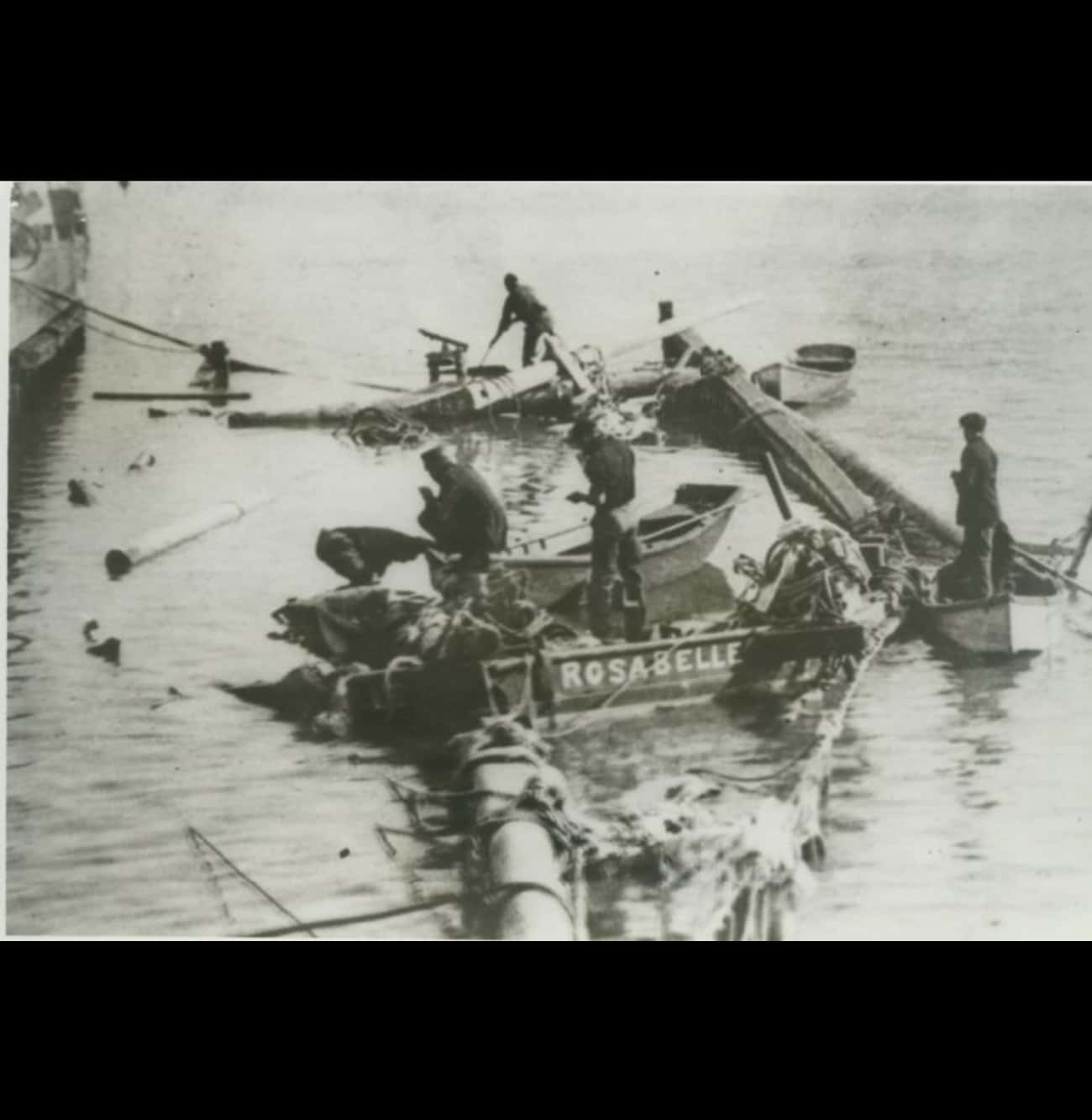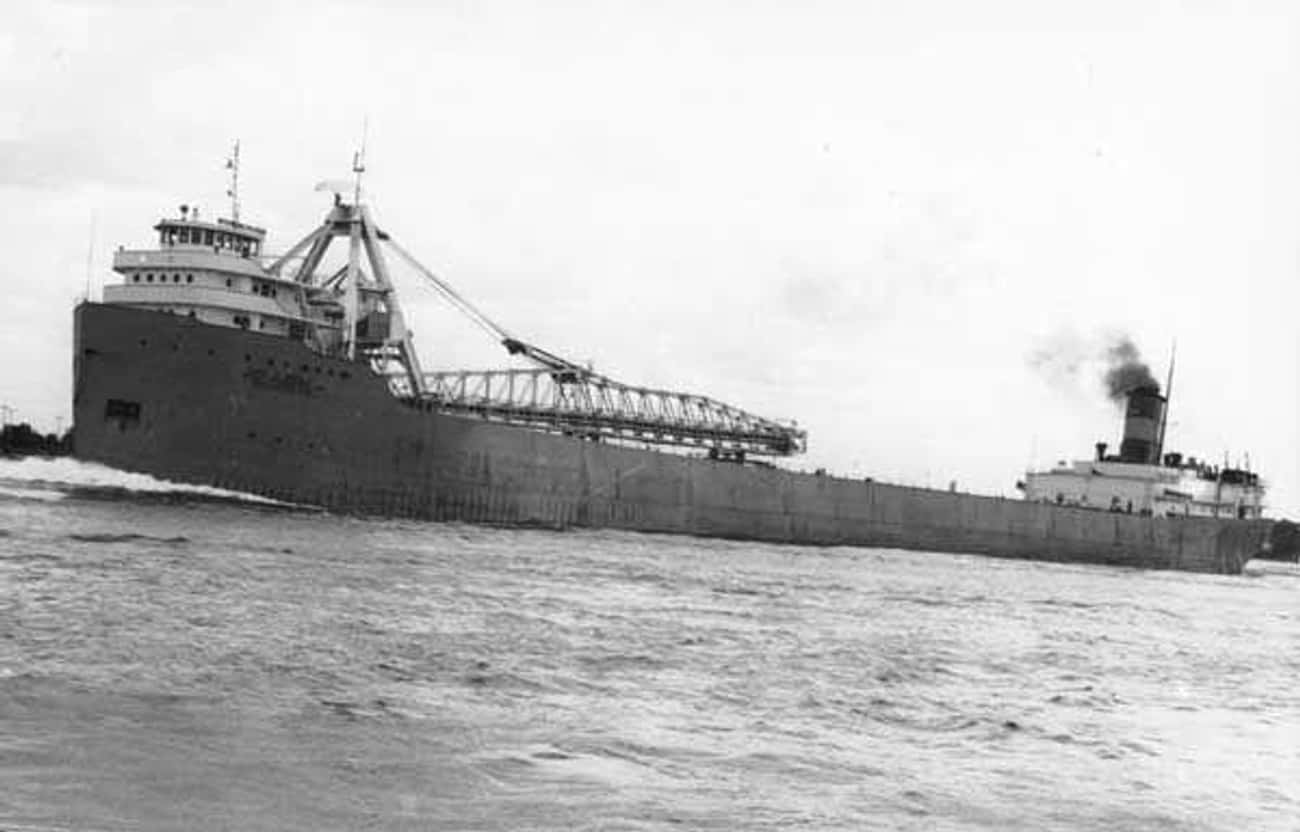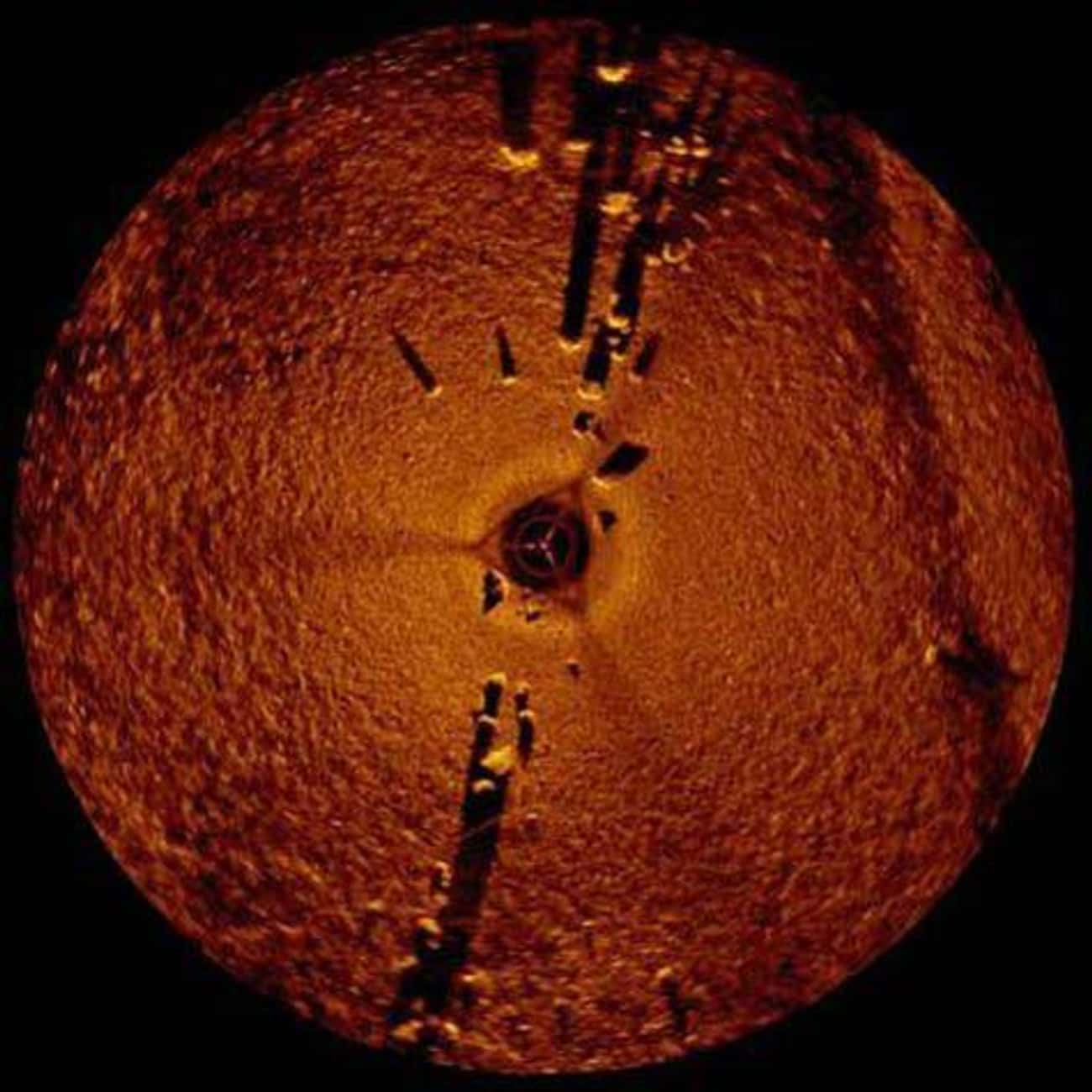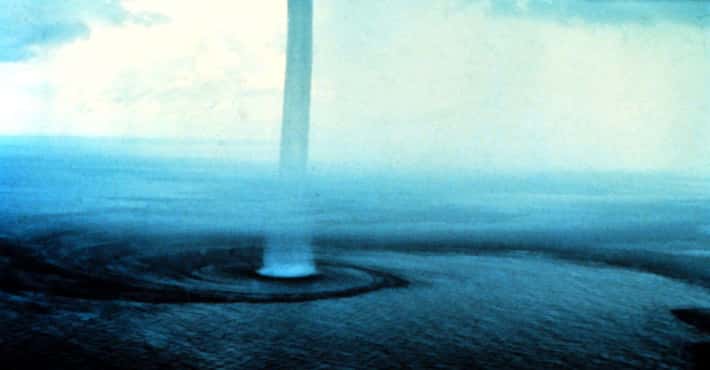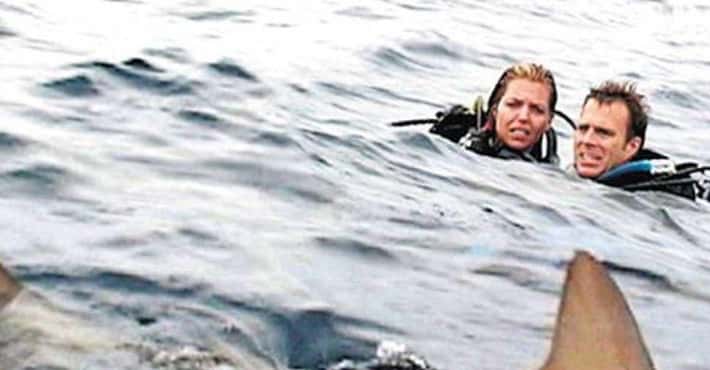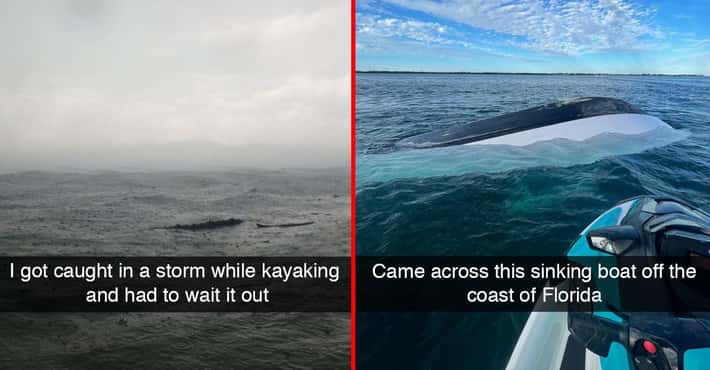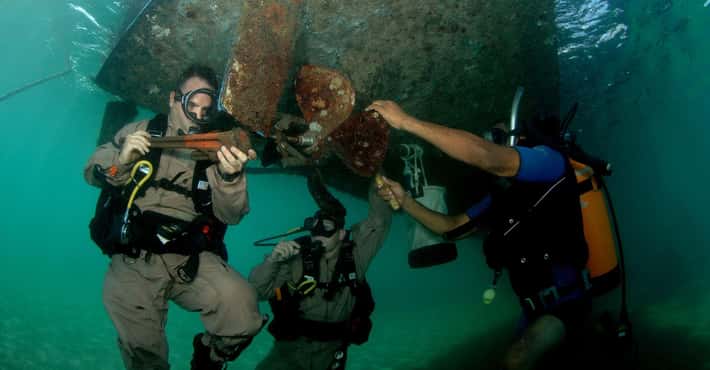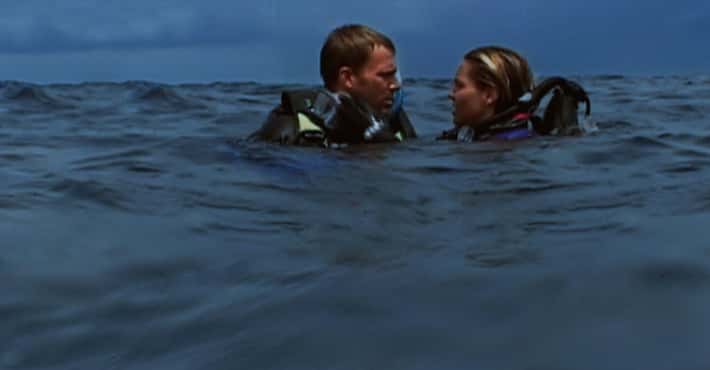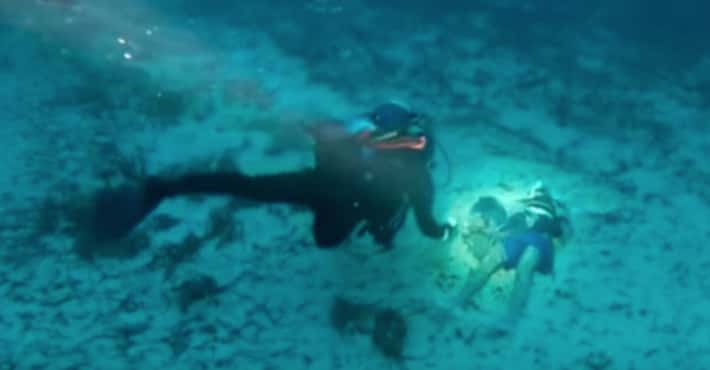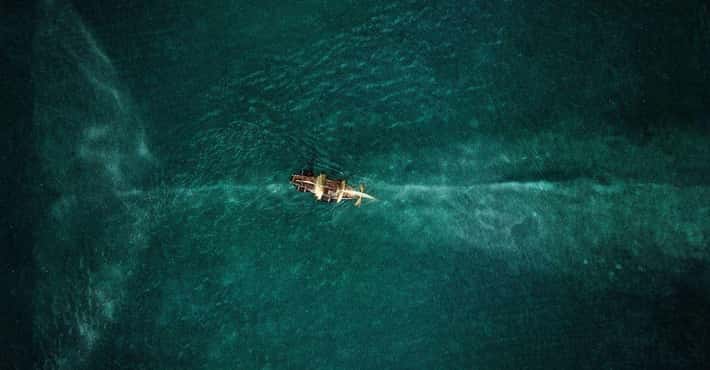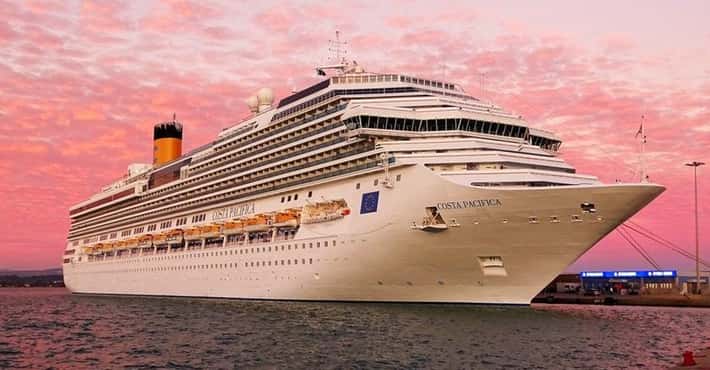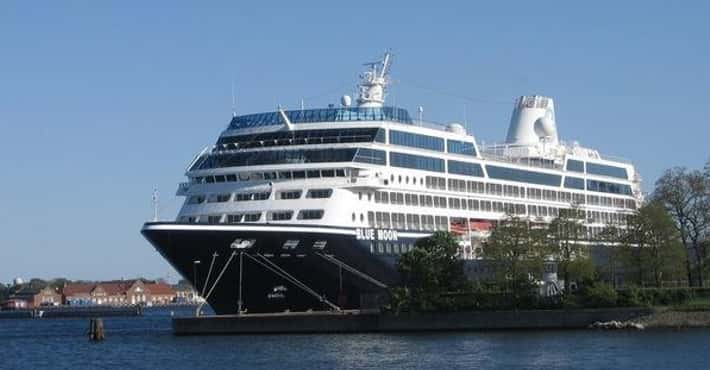The Mystery Of The Lake Michigan Triangle
The Bermuda Triangle isn't the only watery region with a reputation for unexplainable events and tragedies. For centuries, a triangular portion of Lake Michigan has been ground zero for sunken ships, disappearing crews, and vanishing aircraft. As if these incidents aren't creepy enough, what is now known as the Lake Michigan Triangle is also notorious for UFO sightings and strange lights appearing on the horizon.
"A lot of interesting stories have come out of that region of Lake Michigan," Wisconsin Maritime Museum submarine curator Karen Duvalle shared with a local news affiliate. "No one knows why," she then explained. One thing is clear about the Lake Michigan triangle: The mystery doesn't seem to be easing up anytime soon.
The Lake Michigan Triangle Stretches From Manitowoc, WI, East To Ludington, MI, And South To Benton Harbor, MI
The Lake Michigan Triangle is scalene in shape, meaning none of its sides are equal. The three points of the triangle are marked by three different cities. On the Wisconsin side, there's Manitowoc; on the Michigan side, there's Ludington to the north and Benton Harbor to the south.
Unexplained phenomena and frightening legends related to the region date all the way back to the late 17th century, when a French vessel disappeared with the tide... never to be seen again.
- Photo: Father Louis Hennepin / Wikimedia Commons / Public domain
In 1679, The French Brigantine 'Le Griffon' Vanished During Its Maiden Voyage
The Great Lakes' oldest shipwreck remains one of its most puzzling. The French explorer René-Robert Cavelier, Sieur de La Salle commissioned and oversaw the construction of Le Griffon, a massive ship designed for fur hauling. In August 1679, Le Griffon set off on its maiden voyage from Niagara to Michilimackinac - an outpost in the Straits of Mackinaw.
Some historians allege the ship had larger ambitions beyond the outpost: to discover a northwest passage to China and Japan. Unfortunately, Le Griffon vanished while traversing the Lake Michigan Triangle. La Salle had already departed for the mainland, and his remaining six crew members met the same fate as his ship.
In 2001, a researcher named Steve Libert found what he claimed to be Le Griffon's bowsprit at the bottom of Lake Michigan. The elaborately designed spar includes sculptures of a mythical half lion, half eagle creature. Libert's findings have yet to be verified, and the rest of the ship has never been recovered.
- Photo: Unknown / Wikimedia Commons / Public domain
More Than 300 People Lost Their Lives When The Passenger Steamship 'The Lady Elgin' Sank In 1860
Close to 200 years later, the deadliest open water sinking on the Great Lakes would propel the Lake Michigan Triangle into infamy. In the wee hours of September 8, 1860, the wooden-hulled sidewheel steamship PS Lady Elgin collided with the much smaller schooner Augusta, which was loaded down with heavy lumber and headed for Chicago.
"The vessel seemed to pay no attention to us," Lady Elgin Second Mate M.W. Beeman told The Chicago Tribune at the time. "She struck us just forward the paddle box on the larboard side, tearing off the wheel, cutting through the guards and into the cabin and hull."
The Augusta continued on for Chicago as the Lady Elgin took on more and more water. Hundreds of sleeping passengers on the overpacked steamship returning to Milwaukee from Chicago, exhausted from a night of merriment and dancing, received a rude awakening when the ship's crew began their evacuation efforts. "Everything that could be was done to try to stop up the hole," said Frederick Rice, a steward. "Mattresses were pushed into it, and planks spiked over it, but to no avail."
Three hundred people perished as a result of the crash, including the Lady Elgin's captain, Jack Wilson, who spent his final hours saving as many passengers as possible.
After Many Successful Trips Across Lake Michigan, The 'Thomas Hume' And Its Seven Crew Members Disappeared In 1891
Built in 1870, the 132-foot long, three-masted schooner Thomas Hume belonged to lumber baron Charles Hackey's fleet of ships when it disappeared within the Lake Michigan Triangle in 1891. Sailing alongside one of its sister ships, the Rouse Simmons, the Thomas Hume embarked from Muskegon, WI, to Chicago with a large shipment of lumber.
After delivering the wood, both ships turned around to venture back toward Muskegon. Seeing ominous storm clouds gathering in the distance, the crew of the Rouse Simmons decided to turn back and stay in Chicago until the weather improved. The Thomas Hume, on the other side, kept on toward home.
When the Rouse Simmons returned to Muskegon two days later, its crew knew something was wrong when there was no sign of the Thomas Hume in the harbor. Hackey and his business partner Hume put up a $300 reward for information on the Thomas Hume's whereabouts, but the ship and its seven crew members were nowhere to be found. Multiple search operations also resulted in failure.
Fast forward a few hundred years to 2005, when professional recovery diver Taras Lysenko found the intact remains of the Thomas Hume in the southeastern portion of Lake Michigan. Shipwreck experts have since shared their theories about what likely happened to the ill-fated ship, such as the storm overhead produced turbulent seas, causing it to capsize.
- Photo: Unknown / Wikimedia Commons / Public domain
The 'Rouse Simmons' Sank While Carrying A Load Of Christmas Trees Across The Lake In 1912
Even though it avoided disaster in 1891, the Rouse Simmons later succumbed to the Lake Michigan Triangle on November 22, 1912. The ship and its 16 crew members, including Captain Herman Schuenemann, embarked upon a familiar journey from Thompson, MI, to Chicago, set to deliver a load of at least 5,000 Christmas trees. Schuenemann had just recently acquired the schooner for his burgeoning business, the Northern Michigan Evergreen Nursery.
But the Rouse Simmons never made it to Chicago. On November 23, the ship was seen flying a distress flag in clear conditions. However, when a rescue boat finally arrived at the location, there was no sign of the Rouse Simmons anywhere. Wreckage from the ship, including Christmas trees and Captain Schuenemann's wallet, washed ashore in the following decades. It wasn't until October 1971 that the Rouse Simmons was found by scuba diver Gordon Kent Bellrichard off the coast of Two Rivers, WI.
What caused the beloved "Christmas Tree Trip" and its equally beloved "Captain Santa" to go down in the Lake Michigan Triangle? The answer is likely a combination of bad winter weather, a lack of routine maintenance on the ship, and the weight added by all its yuletide cargo.
- Photo: C. Patrick Labadie Collection / Northeast Michigan Oral History and HIstoric Photograph Archive / Public domain
The Schooner 'Rosabelle' Was Found Floating Upside Down In 1921 With No Trace Of Its Crew
The two-masted schooner Rosabelle, built in 1863, had a good life before an unexplained collision in the Lake Michigan Triangle resulted in the ravaged ship washing ashore in 1921. In late October of that year, the Rosabelle left High Island, MI, bound for Benton Harbor. Loaded with lumber, the Rosabelle encountered some sort of disturbance, and its remains were found 42 miles from Milwaukee. None of the ship's 11 crew members were accounted for, and their bodies remain uncovered to this day.
While some accounts claim the Rosabelle met its demise during a storm, others believe it was involved in some sort of clash with another vessel. What remains so confounding about this theory is that no records of accidents were reported by other ships in the area at the time. Did the Rosabelle meet a rogue wave, or was something more nefarious at play? The fact that the ship's yawl, or two-headed sail, was never recovered adds yet another layer to an already complex mystery.
In 1937, Captain George R. Donner Went Missing From His Locked Cabin On Board The 'O.M. McFarland' While Sailing Through The Triangle
"A new mystery of the Great Lakes was unfolded today when the freighter O.M. McFarland docked in Port Washington, WI, and crew members reported the disappearance of the ship's master," the Cleveland Press published in 1937. As reported by the ship's crew, Captain George R. Donner vanished from his cabin on April 29, 1937. Days earlier, the coal-powered McFarland made it all the way to Erie, PA, where it picked up a shipment of coal. Traversing the Great Lakes, the ship had no problems until it arrived in the Lake Michigan Triangle.
After successfully guiding his ship through icy and rough waters, Captain Donner retired to his quarters late on April 28 to get a few hours of sleep. When the McFarland's first mate knocked on Captain Donner's door as they approached Port Washington early on April 29, there was no answer. The door to the captain's quarters was locked, so the crew searched the galley for their skipper. There was no sign of him anywhere. This prompted the men to break down Captain Donner's door, believing he'd fallen into a heavy sleep. Instead of finding a snoring man, the crew entered an empty cabin.
At the time of Captain Donner's evanescence, the McFarland was approximately 30 miles from one of the Lake Michigan Triangle's nexuses: Ludington, MI. His body was never found, and the case remains as much of an enigma as it was in 1937.
- Photo: RuthAS / Wikimedia Commons / CC-BY 3.0
En Route To Seattle From New York City, Northwest Airlines Flight 2501 Went Dark Over The Triangle On June 23, 1950
The only thing more horrific than a plane crash is a plane going dark forever, its passengers never to be recovered. That's what happened to Northwest Airlines Flight 2501 in 1950 while flying over the Lake Michigan Triangle. En route from New York City to Seattle, the plane reached the eastern shoreline of Lake Michigan just after midnight on June 24. The plane's captain, Robert C. Lind, requested clearance from air traffic control to descend to 2,500 feet in order to avoid a lightning storm brewing over the Great Lake. Captain Lind was denied, and the plane quickly vanished.
Lind, two crew members, and 55 passengers also vanished that night. At the time the plane went AWOL, a local of South Haven, MI, told reporters he saw "a terrific flash out in the lake." This strange light was seen by others, one of whom explained, "It was a funny light. It looked like the sun when it goes down. It only lasted a second and then was gone." These ghostly sights and sounds have led to speculations that something supernatural, even extraterrestrial, caused the plane to go missing.
The worst commercial airplane disaster of its time, the disappearance of Flight 2501 remains mired in controversy. Only bits of debris and, tragically, some body parts floated to shore in the days and weeks after the aircraft went dark. While it's assumed the plane crashed into Lake Michigan because of the storm it flew into, no subsequent searches have resulted in the plane's discovery. In fact, nautical fiction writer Clive Cussler funded a yearly quest to retrieve Northwest Flight 2501 from its watery grave. Every year, the search team returned to shore empty-handed.
The 'Carl D. Bradley' Literally Broke In Half When It Was Caught In A Massive Storm During A Routine Trip In 1958
Known as "The Queen of the Lakes," the 639-foot Carl D. Bradley broke through icy Great Lake waters with ease. The freighter was used to haul limestone from Lake Huron and Lake Superior to Lake Michigan's ports.
On November 18, 1958, traveling from Gary, IN, to the upper Lake Michigan, the Bradley ventured into a common phenomenon: a Lake Michigan storm. Having endured many bad storms, the Bradley's captain and crew forged on. Eventually, the storm became so powerful it began to split the long ship's hull in two. The Carl D. Bradley sank just like the Titanic: its two broken halves landing upward toward the surface of Lake Michigan.
Of the ship's 41 crew members, only two survived. After the disaster, news reports indicated the ship didn't make it through the storm because of damage it sustained earlier in 1958 after running aground twice.
A Skier Vanished From The Shore Of Lake Michigan In 1978, Only To Reappear 15 Months Later In Massachusetts With No Memory Of What Happened
In February 1978, West Michigander Steven Kubacki was reported missing. The Hope College student had recently commenced a cross-country skiing expedition. As authorities swept the area for signs of Kubacki, they discovered a set of footprints that led right to the eastern shore of Lake Michigan - and then ended abruptly.
After Kubacki's skis and backpack were recovered nearby, everyone assumed he'd fallen through the surface ice on the lake and met his demise - even though the ice and snow over Lake Michigan were thick that winter. To the world's amazement, Kubacki woke up in a grassy field 15 months later. He was 700 miles east in Pittsfield, MA. Kubacki had no memory of where he'd been for 15 months or how he ended up so far away from home. His last memory was reaching Lake Michigan.
Kubacki refused to discuss his situation after his initial rescue, and to this day, remains silent about what transpired. The baffling circumstances through which Kubacki disappeared and then reappeared, whether linked to an unearthly cause or not, will forever be a riddle.
Locals Frequently Complain About Observing Peculiar Lights And UFOs
Michigan ranks high when it comes to UFO sightings by state, and some residents conjecture the Lake Michigan Triangle is a major reason why. The disappearance of Northwest Flight 2501 has stirred interest among ufologists because locals reported seeing unexplained lights in the sky when the plane vanished. This is just the tip of the iceberg, though, when it comes to unidentified flying objects, freak weather events, and uncanny observances.
The same is true across Lake Michigan in Wisconsin. According to WOOD-TV, based out of West Michigan, Wisconsin police have been fielding complaints about UFOs over the Lake Michigan Triangle since 1913. In 1919, the New York Times reported on two colossal balls of fire seen falling into the Great Lake. The paper deemed the objects meteors, but other eyewitnesses chalked it up to "metaphysical forces" wreaking havoc. The Sausalito News in California noted, "The rumblings [from the impact] were heard as far as South Bend and La Porte, Indiana."
In more recent history, hundreds of Michigan residents along Lake Michigan reported seeing disc-like objects, some with flashing lights, hovering over them on March 8, 1994. Among the witnesses was a local National Weather Service radar operator. "I've never seen anything like this, not even when I'm doing storms," the operator exclaimed when he called the local police department. "These aren't storms."
- Photo: Secrets of the Underground / Science Channel
Archaeologists In Search Of Shipwrecks In 2007 Stumbled Upon A Series Of Carefully Arranged Rocks In The Triangle Now Known As 'Underwater Stonehenge'
"When you see it in the water, you're tempted to say this is absolutely real," underwater archeology professor Mark Holley shared with reporters in 2007. "But that's what we need the experts to come in and verify." With his colleague Brian Abbot, Holley discovered a circular stone arrangement in 40 feet of water while using sonar technology to search for shipwrecks in the Lake Michigan Triangle.
Along the periphery of the rocks, Holley and Abbot also found a boulder marked with a prehistoric carving of the long-extinct mastodon. Could the mystery of the Lake Michigan Triangle date all the way back to 10,000 plus years ago, when mastodons still roamed the planet? Research into the rock formations remains ongoing, and in order to respect indigenous groups whose ancestors may have erected Lake Michigan's "Underwater Stonehenge," the exact location of the structures is a secret.
Some suspect the Stonehenge-like arrangement served a ceremonial purpose, while others believe it was built to dam up the lake in order to make fishing easier. Whatever the case may be, the yet-to-be explained configuration makes up but a few imprints on the floor of a lake littered with lost hopes, stories, and ships.


